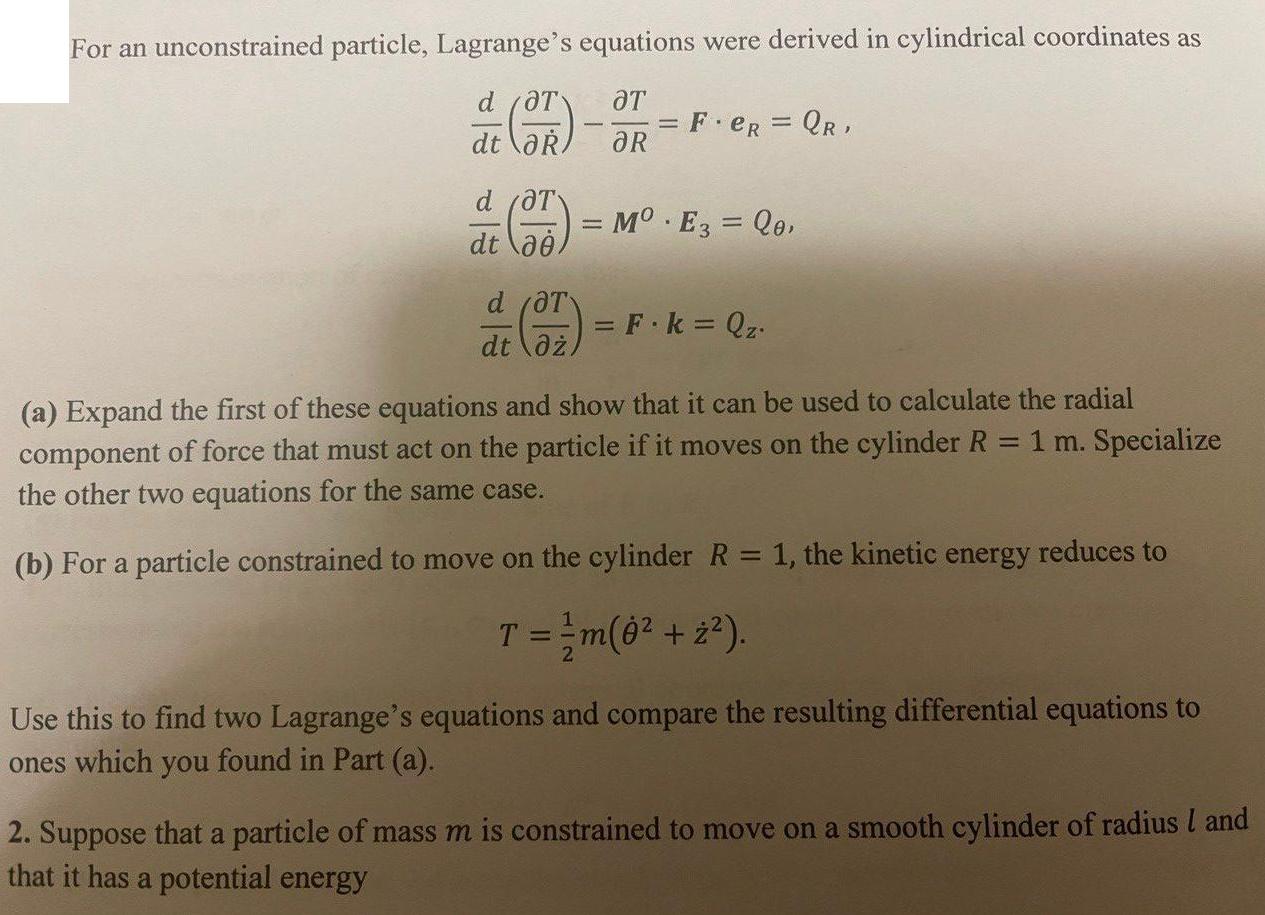Question
For an unconstrained particle, Lagrange's equations were derived in cylindrical coordinates as d OT T R F.eR = QR, d (27) = M E3

For an unconstrained particle, Lagrange's equations were derived in cylindrical coordinates as d OT T R F.eR = QR, d (27) = M E3 = Q0 dt ao. d OT dt a. = Fk = Qz (a) Expand the first of these equations and show that it can be used to calculate the radial component of force that must act on the particle if it moves on the cylinder R = 1 m. Specialize the other two equations for the same case. (b) For a particle constrained to move on the cylinder R = 1, the kinetic energy reduces to T = m(0 +2). Use this to find two Lagrange's equations and compare the resulting differential equations to ones which you found in Part (a). 2. Suppose that a particle of mass m is constrained to move on a smooth cylinder of radius I and that it has a potential energy
Step by Step Solution
3.41 Rating (151 Votes )
There are 3 Steps involved in it
Step: 1

Get Instant Access to Expert-Tailored Solutions
See step-by-step solutions with expert insights and AI powered tools for academic success
Step: 2

Step: 3

Ace Your Homework with AI
Get the answers you need in no time with our AI-driven, step-by-step assistance
Get StartedRecommended Textbook for
Income Tax Fundamentals 2013
Authors: Gerald E. Whittenburg, Martha Altus Buller, Steven L Gill
31st Edition
1111972516, 978-1285586618, 1285586611, 978-1285613109, 978-1111972516
Students also viewed these Programming questions
Question
Answered: 1 week ago
Question
Answered: 1 week ago
Question
Answered: 1 week ago
Question
Answered: 1 week ago
Question
Answered: 1 week ago
Question
Answered: 1 week ago
Question
Answered: 1 week ago
Question
Answered: 1 week ago
Question
Answered: 1 week ago
Question
Answered: 1 week ago
Question
Answered: 1 week ago
Question
Answered: 1 week ago
Question
Answered: 1 week ago
Question
Answered: 1 week ago
Question
Answered: 1 week ago
Question
Answered: 1 week ago
Question
Answered: 1 week ago
Question
Answered: 1 week ago
Question
Answered: 1 week ago
Question
Answered: 1 week ago
View Answer in SolutionInn App



